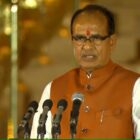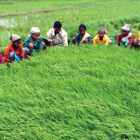Every rupee invested in agricultural R&D gives an eight-fold return to the rural economy and is the most cost-effective way to reduce poverty.
That the government needs to step up private sector involvement in agricultural research is a given and it would be interesting to pause on why Bharat Ratna CNR Rao called the acts of politicians “idiotic”. Was the scientist referring to those advocating a ban on GM research in India? After all, Rao has vehemently urged a five-fold increase in funding for research and development in agriculture. That includes research on GM crops.
On the food front, India has been able to sustain itself because of the hard work of farmers and because of improvements in farm technologies. The world spends about $50 billion a year on food and farming science; it spends more on cosmetics. The world spends about $1,750 billion a year on new weapons — that is 35 times more than the amount spent on food research. Agricultural investment is a drop in the ocean when one considers the quantity of finance available worldwide.
The next 50 years will need to produce as much food as has been produced in the last 10,000 years. By then, the global population may well touch 10 billion, while India’s population could go up to 1.8 billion. With the existing technologies, India can feed these numbers provided every other condition remains unchanged. However, the ecosystem is in a perpetual state of flux and could have a dramatic impact on food security, especially in India, as it is more vulnerable than most other countries.
The earth is likely to get 3° hotter by 2100. Even a 1° rise in temperature would reduce the world food supply by 10 per cent. This change will be most devastating for the tropics, especially India’s bread basket, the Indo-Gangetic plains. India has 17 per cent of the world’s population surviving on 4.2 per cent of the world’s water supplies and 2.4 per cent of its land. Its per capita water supply is projected to decrease by 45 per cent by 2050. Sixty per cent of the arable land is rain-fed and already risk prone. The soil in one-third of the total arable land in India has become too depleted for agricultural productivity.
How does investment in R&D help? Every rupee invested in agricultural R&D gives an eight-fold return to the rural economy and is the most cost-effective way to reduce poverty. India currently accounts for 30 per cent of the world’s poor and hungry. When India does manage to lift them out of poverty, fulfilling the subsequent demand for more poultry, meat, milk and proteins will be a herculean task. A shortfall is inevitable in spite of government policies. Research in branches other than crop sciences, such as animals, fisheries, waste management, water and fuel optimisation, bio fertilisers and biological control, is seriously lagging behind. India has to look beyond just crops.
Even though the production of various crops has increased tremendously, India’s average yields are below the best in the world. The country with the highest average yield for paddy is Egypt, with 100 quintals per hectare, while India’s average yield is 31.95 quintals per hectare. In Israel, maize yields are 251.80 quintals per hectare while India averages 20.02 quintals per hectare. The initial successes in yield increase in India came with public sector investment and foreign collaborations but those times are unlikely to return. The future requires private sector participation, as is the prevailing trend around the world. In addition to being an investor, the government has to enable and allow the private sector to deliver. For that there is need for an unbiased regulatory mechanism and a robust redressal system for farmers.
India’s agriculture R&D expenditure is only 0.59 per cent of the agriculture GDP. It is possibly seven times less than that of the US and much less than Brazil, Malaysia and even Kenya. This allocation must rise to two per cent. Many worry about technology dominance by other countries but that is bound to be more of a problem if India does not invest in technology ourselves. Most of India’s budgetary allocation for agriculture R&D is spent on salaries for scientists and supporting staff. China produces double the amount that India does from the same area of arable land.
There are sceptics, who question the ability of research institutions to turn increased finance into concrete results. There is, therefore, a need to radically alter how R&D is perceived and delivered. Involving farmers in the decision-making process would be a good place to begin.




